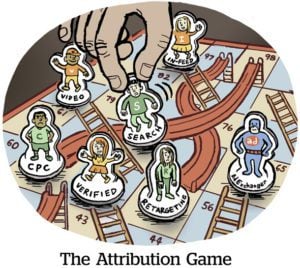The New York Times is eyeing inroads into TV and emerging channels such as voice search to confront the new realities of the news business.
“Publishers who’ve relied too heavily on social platforms and display advertising are in flux, but we built a billion-dollar consumer business with 3.6 million subscribers across digital and print,” New York Times CEO Mark Thompson said Monday at the publisher’s NewFronts presentation. “News matters more than ever, but so do … audience, relevance and innovation, and we plan to deliver on all of them.”
One way The Times hopes to innovate is by translating its storytelling and emerging platforms, like the popular Michael Barbaro podcast “The Daily,” into opportunities for TV programming.
But instead of a web or mobile video series, The New York Times is forming premium TV alliances.
In January, it partnered with production company Anonymous Content to help secure film and TV rights to The New York Times’ news products.
Although it didn’t divulge too many details, The Times is partnering with Showtime on a four-part series called “The Fourth Estate” documenting Times’ journalists’ coverage of the Trump White House.
It’s also looking to kickstart a medical detective series on Netflix based on New York Times Magazine column “Diagnosis” and a program documenting noteworthy women and minorities who never received a Times’ obituary based on the editorial project “Overlooked.”
The Times is also investing in voice search, which the publisher’s head of R&D Marc Lavallee heralded as “an ideal interface for service journalism.”
About 20% of Americans or 47.3 million people own a smart speaker such as Amazon’s Alexa or Google Home, and about a quarter of that total have made a purchase using their smart speaker.
The commercial opportunity is obviously huge, and the publisher views voice search as a place to pioneer new brand partnerships.
“We can’t take existing ad models and copy them over,” argued Lavallee. “Imagine getting a voice pre-roll when you ask Alexa for the weather. But brand has the opportunity to ‘own answers’ for a set of questions consumers ask. … and The Times is a great, full-service partner to help conceive and launch voice experiences.”














